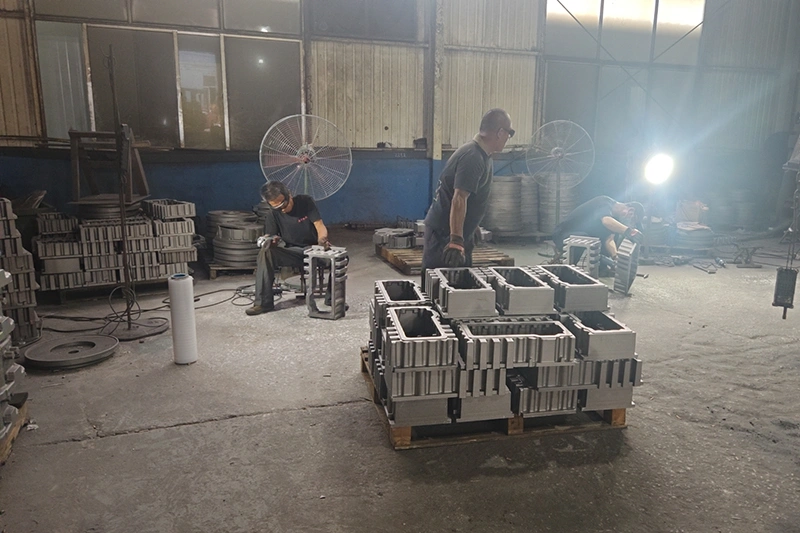Grinding media are the workhorses of material processing—specialized objects that crush, grind, and refine raw materials into precise particle sizes through impact and attrition inside mills and grinders. These essential components determine your production efficiency, product quality, and operational costs across mining, cement production, pharmaceutical manufacturing, and countless other industries.
Without the right grinding media, your milling operations face inconsistent particle sizes, excessive wear costs, and reduced throughput. This guide breaks down exactly how these components work, which types suit specific applications, and why material selection makes or breaks your processing efficiency.

Grinding media transform materials through two primary mechanisms: impact and attrition. When your mill rotates, the media lifts and cascades down, creating high-energy collisions that fracture larger particles.
The cascading action generates three distinct zones inside your mill.
Different grinding applications demand specific media shapes.
Spherical grinding balls remain the industry standard for good reason. They provide maximum surface area contact, uniform wear patterns, and predictable grinding behavior. Ball sizes typically range from 12mm to 125mm diameter.
Smaller balls excel at fine grinding and finishing work. Larger balls handle coarse grinding and primary size reduction. Many operations use graduated ball charges—multiple sizes working together—to maximize efficiency across the full particle size range.
Rod mills use long steel cylinders that create a cascading waterfall effect. This action produces a coarser, more uniform product with minimal fines generation. Rods typically measure 50-100mm in diameter and span the mill’s internal length.
Cylpebs combine characteristics of balls and rods. These cylindrical shapes with rounded ends offer improved grinding efficiency compared to balls in certain applications. They’re particularly effective in secondary grinding circuits where uniform particle distribution matters.
Micro-beads ranging from 0.1mm to 3mm enable ultra-fine grinding in specialized mills. Paint, ink, and pharmaceutical manufacturers rely on these tiny media for achieving nanometer-scale particle sizes.
Cylindrical media provides an alternative to balls in specific applications. The flat ends create different impact patterns, often producing fewer fines while maintaining grinding efficiency. Cylinders work well in dry grinding operations where product contamination must be minimized.

Material selection determines your grinding media’s performance, lifespan, and cost-effectiveness.
Forged steel grinding media delivers the highest impact resistance and toughness available. The forging process aligns the steel’s grain structure, creating superior durability compared to cast alternatives.
These media excel in primary grinding applications where maximum impact force is essential. Mining operations processing hard ores rely on forged steel balls to maintain consistent performance under extreme conditions. Expect 15-20% longer wear life compared to cast steel alternatives.
Cast iron media offers an economical solution for less demanding applications. While not matching forged steel’s durability, cast iron provides adequate performance for softer materials and lower-impact grinding.
The material’s natural hardness handles moderate grinding tasks effectively. Cement plants often choose cast iron for clinker grinding where extreme toughness isn’t required. The lower initial cost makes cast iron attractive for operations prioritizing upfront savings over long-term wear performance.
High-chrome steel media contains 10-32% chromium content, creating exceptional wear resistance through carbide formation. This material resists corrosion while maintaining hardness throughout its service life.
The chromium content creates a protective oxide layer that prevents rust and chemical attack. This makes high-chrome media ideal for wet grinding applications and corrosive environments.
Ceramic grinding media eliminates iron contamination in sensitive applications. Alumina, zirconia, and silicon carbide compositions offer chemical inertness with excellent wear resistance.
Pharmaceutical and food processing industries require this contamination-free grinding. Ceramic media also excels in electronic materials processing where metallic contamination would ruin product quality. The lower density compared to steel means less energy consumption in high-speed mills.
Glass beads provide the ultimate in contamination-free grinding for specialized applications. Their smooth surface and chemical inertness make them perfect for dispersing and grinding materials that require absolute purity.
Cosmetics, high-end paints, and specialty chemicals rely on glass media. The spherical shape ensures gentle grinding action that preserves delicate molecular structures. While wear rates exceed other media types, the contamination-free processing justifies the higher replacement frequency.

Start with media 10-20 times larger than your largest feed particle size. For fine grinding, use media 1000 times your target product size.
Monitor your media charge weight monthly and top up when consumption reaches 10-15% of total charge. Complete media replacement typically occurs every 6-24 months depending on application severity, material hardness, and operational parameters.
Avoid mixing materials with different wear rates or densities as this creates segregation and reduces efficiency. If mixing is necessary, ensure materials have similar specific gravities and wear characteristics to maintain uniform charge distribution.

